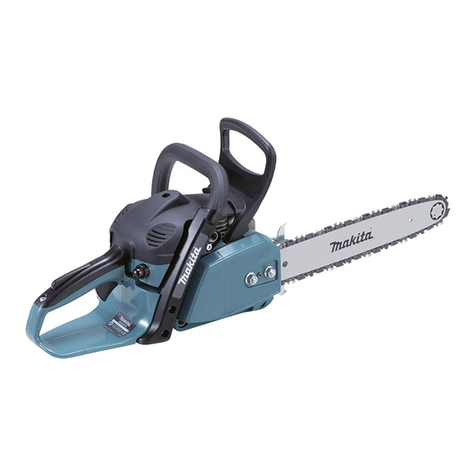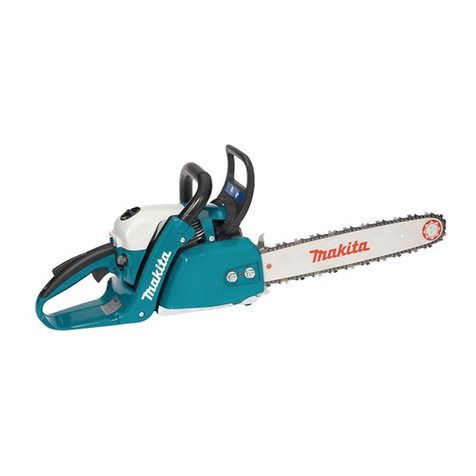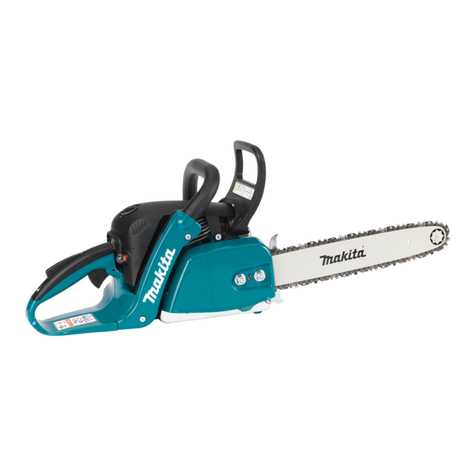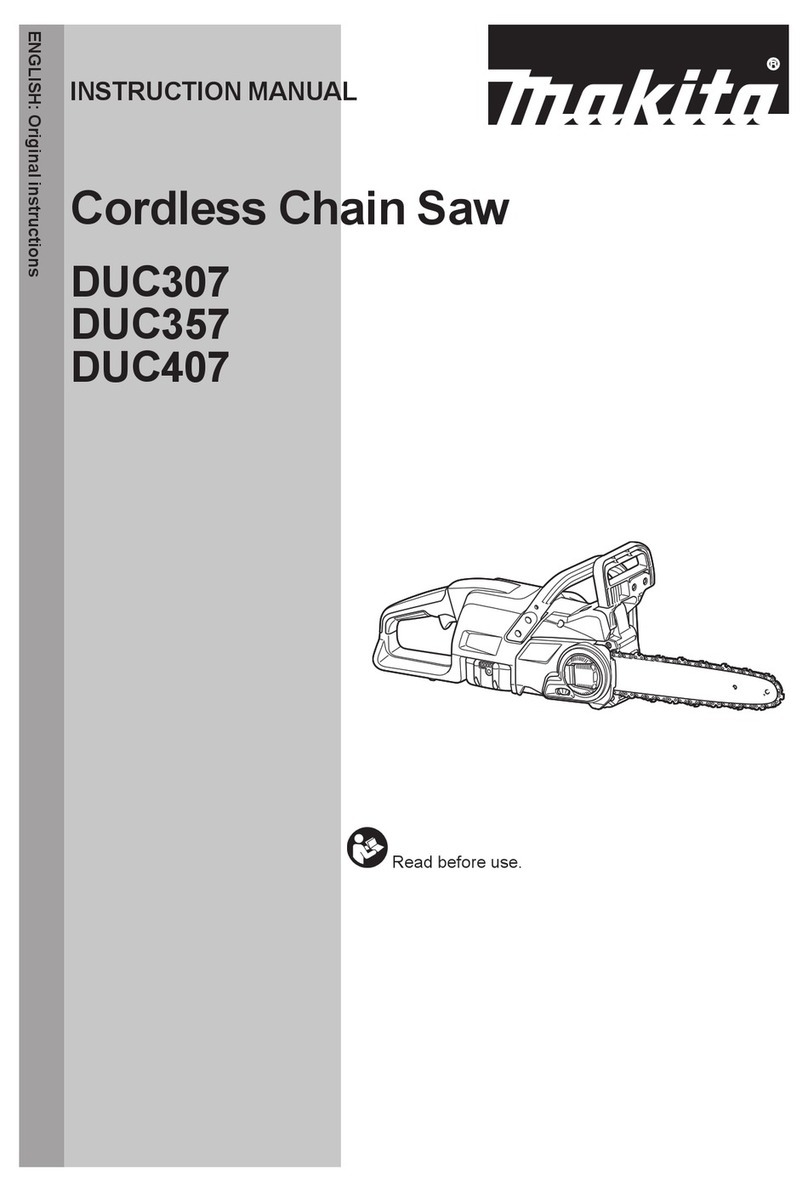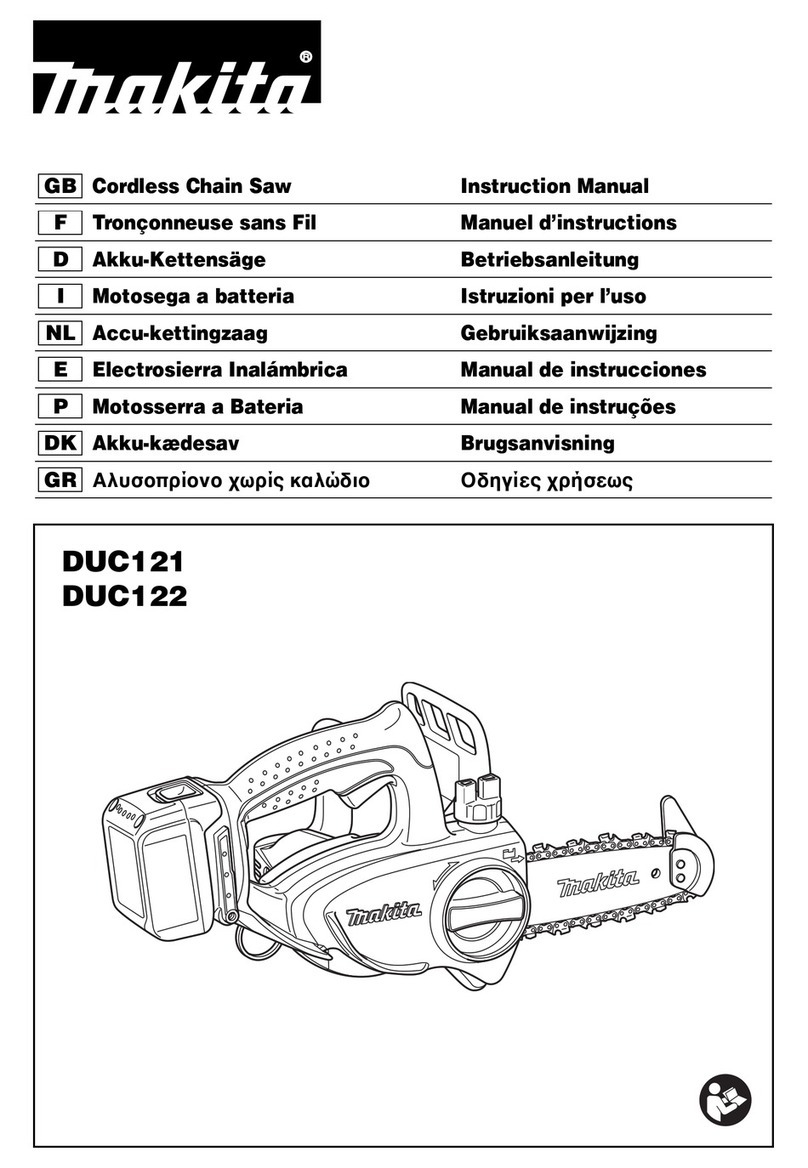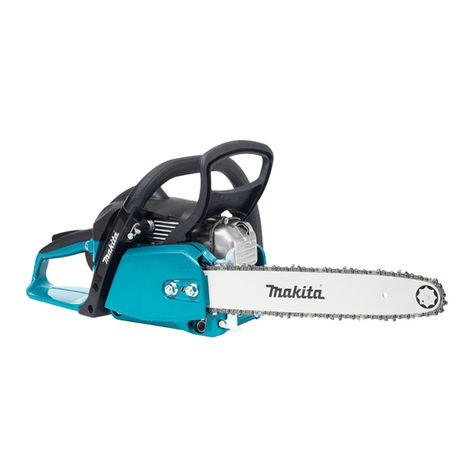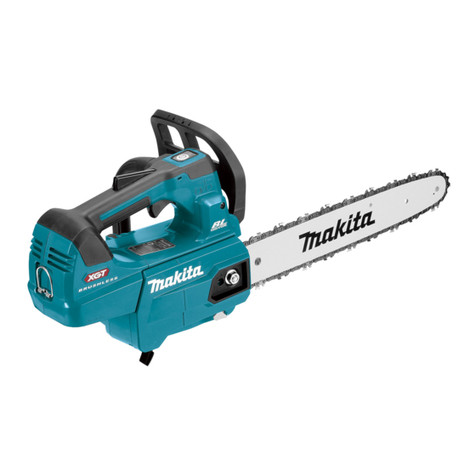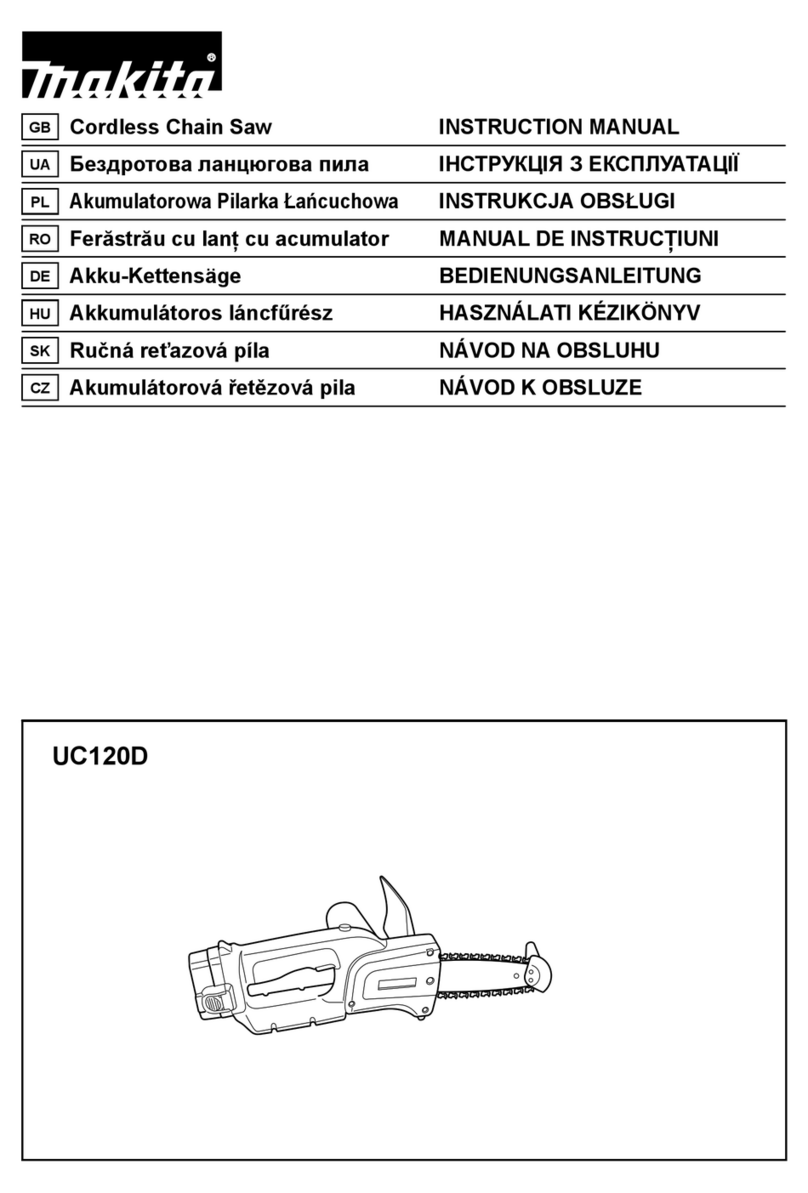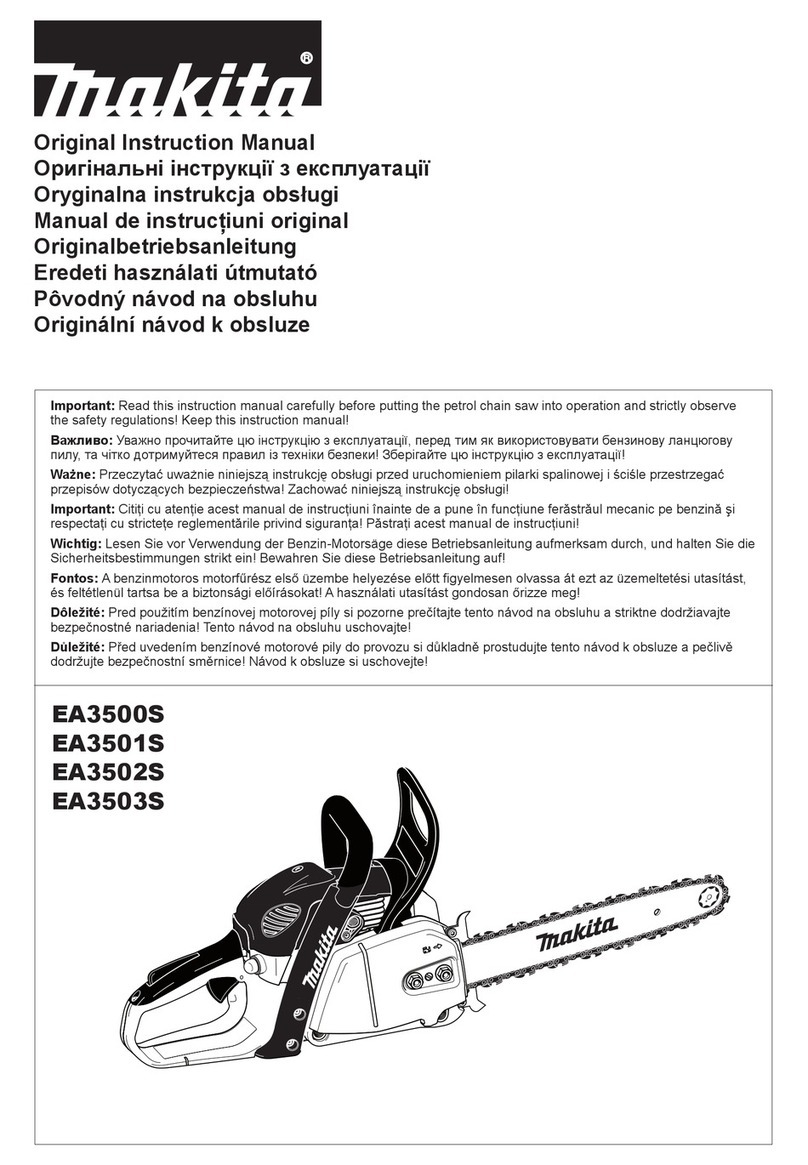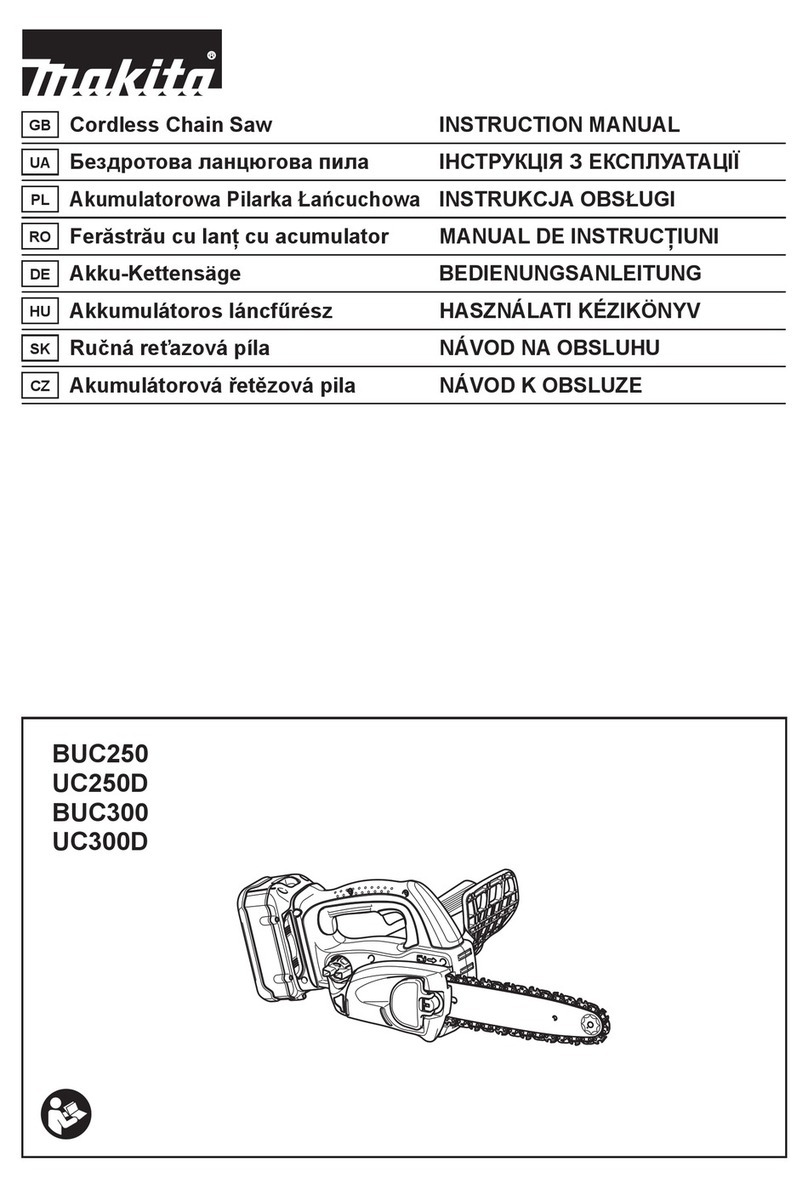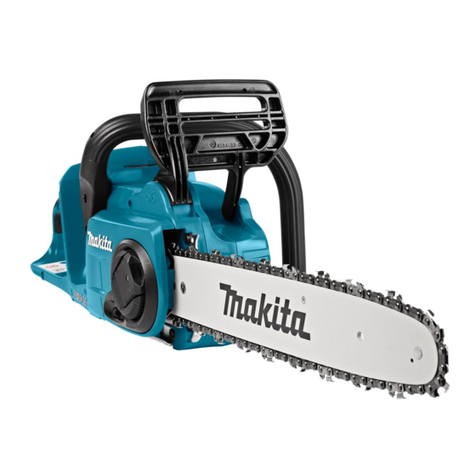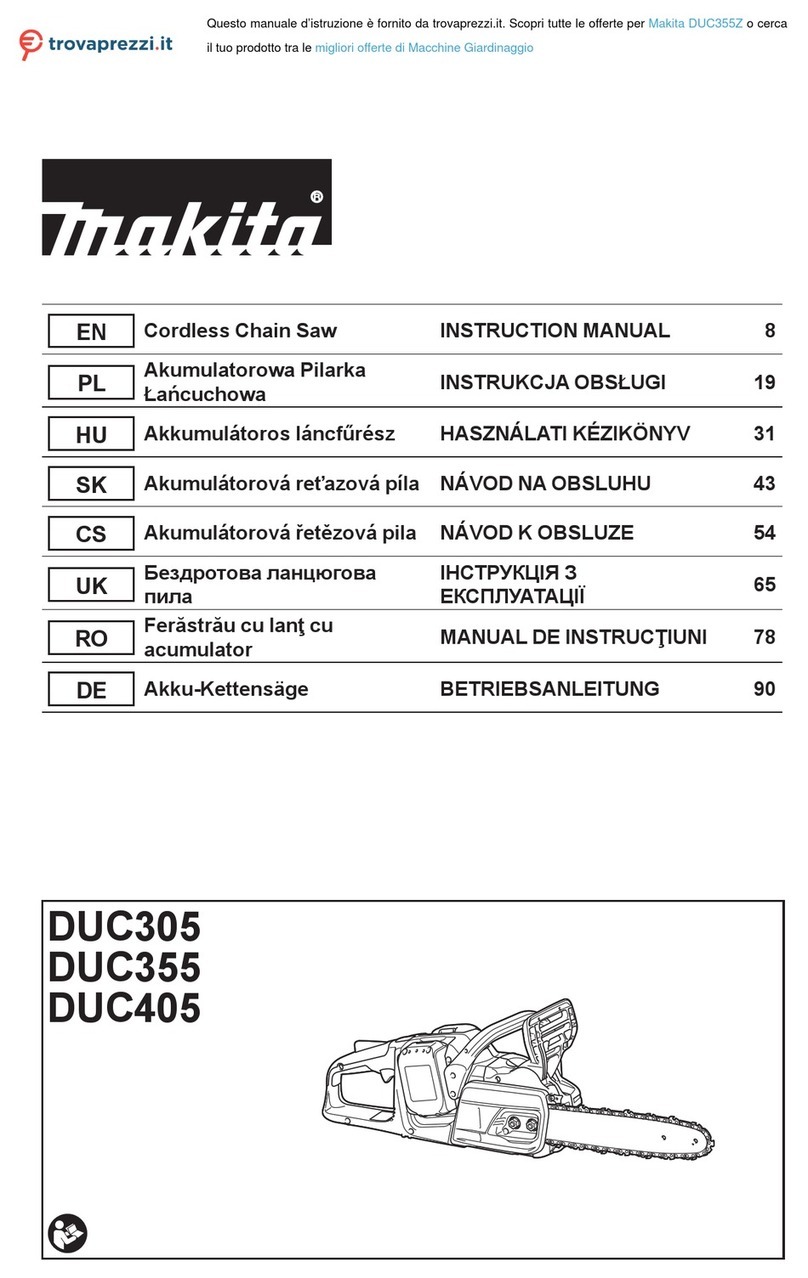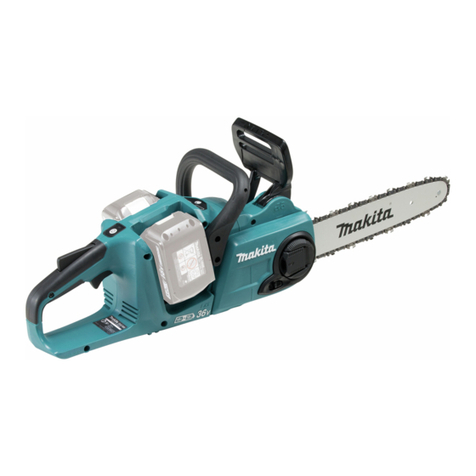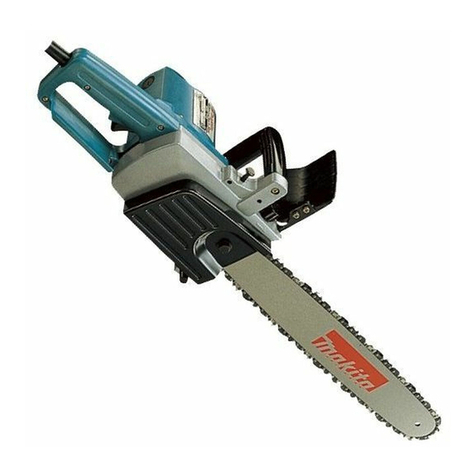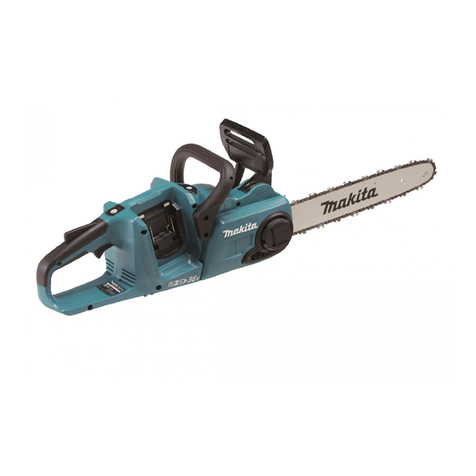10
complies with the safety regulations. Check in par-
ticular that:
• The chain brake is working properly;
• The run-down brake is working properly;
• The bar and the sprocket cover are fitted correctly;
• The chain has been sharpened and tensioned in
accordance with the regulations;
• The mains cable and mains plug are undamaged;
Refer to the “CHECKS “section.
2. Always ensure in particular that the extension cable
used is of adequate cross-section (see “SPECIFICA-
TIONS”). When using a cable reel, wind the cable
completely off the reel. When using the saw in the
open air, ensure that the cable employed is intended
for open-air use and is rated accordingly.
3. Do not operate the chain saw in the vicinity of flamma-
ble dust or gases, as the motor generates sparks and
presents a risk of explosion.
4. Work only on firm ground and with a good footing. Pay
particular attention to obstacles (e.g. the cable) in the
working area. Take particular care where moisture,
ice, snow, freshly cut wood or bark may make sur-
faces slippery. Do not stand on ladders or trees when
using the saw.
5. Take particular care when working on sloping ground;
rolling trunks and branches pose a potential hazard.
6. Never cut above shoulder height. (Fig. 1)
7. Hold the chain saw with both hands when switching it
on and using it. Hold the rear handle with your right
hand and the front handle with your left. Hold the han-
dles firmly with your thumbs. The bar and the chain
must not be in contact with any objects when the saw
is switched on.
8. Clean the area to be cut of foreign objects such as
sand, stones, nails, wire, etc. Foreign objects damage
the bar and chain, and can lead to dangerous kick-
back.
9. Take particular care when cutting in the vicinity of wire
fences. Do nut cut into the fence, as the saw may kick
back.
10. Do not cut into the ground.
11. Cut pieces of wood singly, not in bunches or stacks.
12. Avoid using the saw to cut thin branches and roots, as
these can become entangled in the chain saw. Loss of
balance presents a hazard.
13. Use a secure support (trestle) when cutting sawn tim-
ber.
14. Do not use the chain saw to prise off or brush away
pieces of wood and other objects.
15. Guide the chain saw such that no part of your body is
within the extended path of the saw chain. (Fig. 2)
16. When moving around between sawing operations,
apply the chain brake in order to prevent the chain
from being operated unintentionally. Hold the chain
saw by the front handle when carrying it, and do not
keep your finger on the switch. Withdraw the mains
plug when taking breaks or leaving the chain saw
unattended. Leave the chain saw where it cannot
present a hazard.
17. Withdraw the mains plug when taking breaks or leav-
ing the chain saw unattended. Leave the chain saw
where it cannot present a hazard.
Kickback
1. Hazardous kickback may arise during work with the
chain saw. Kickback arises when the tip of the bar (in
particular the upper quarter) comes into contact with
wood or another solid object. This causes the chain
saw to be deflected in the direction of the operator.
(Fig. 3)
2. In order to avoid kickback, observe the following:
• Never begin the cut with the tip of the bar.
• Never use the tip of the bar for cutting. Take particu-
lar care when resuming cuts which have already
been started.
• Start the cut with the chain running.
• Always sharpen the chain correctly. In particular, set
the depth gauge to the correct height (refer to
“Sharpening the chain” for details).
• Never saw through several branches at a time.
• When limbing, take care to prevent the bar from
coming into contact with other branches.
• When bucking, keep clear of adjacent trunks.
Always observe the bar tip.
• Use a trestle.
Safety features
1. Always check that the safety features are in working
order before starting work. Do not use the chain saw if
the safety features are not working properly.
- Chain brake:
The chain saw is fitted with a chain brake which brings
the saw chain to a standstill within a fraction of a sec-
ond. It is activated when the hand guard is pushed for-
wards. The saw chain then stops within 0.15 s, and
the power supply to the motor is interrupted.
- Run-down brake: (Fig. 4)
The chain saw is equipped with an run down brake
which brings the saw chain to an immediate stop when
the ON/OFF switch is released. This prevents the saw
chain from running on when switched off, and thus
presenting a hazard.
-Thefront and rear hand guards protect the user
against in jury from pieces of wood which may be
thrown backwards, or a broken saw chain.
- The trigger lockout prevents the chain saw from
being switched on accidentally.
-Thechain catcher protects the user against injury
should the chain jump or break.
Transport and storage
................... When the chain saw is not in use or is
being transported, withdraw the mains
plug and fit the scabbard supplied with
the saw. Never carry or transport the
saw with the saw chain running.
1. Carry the chain saw by the front handle only, with the
bar pointing backwards.
